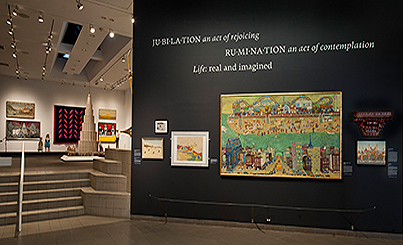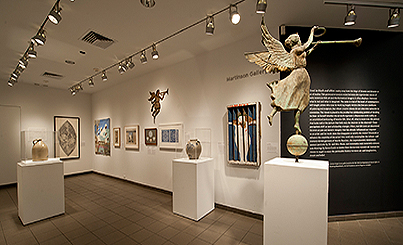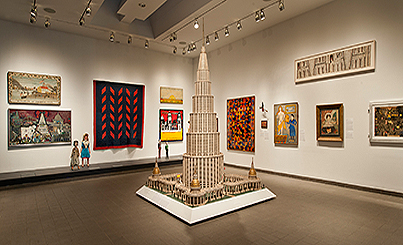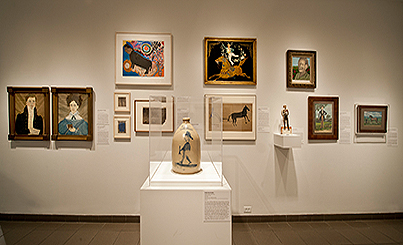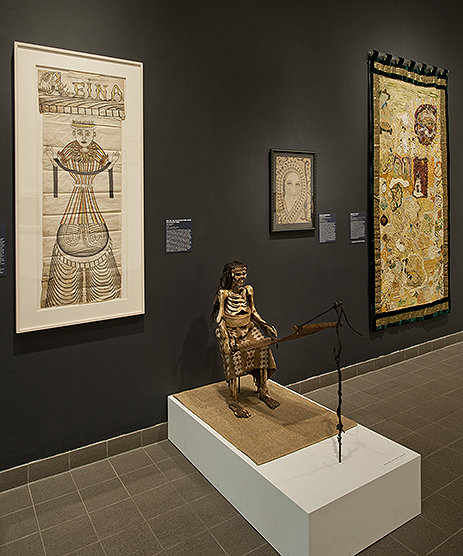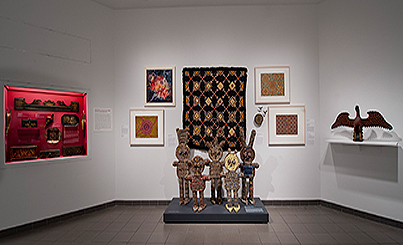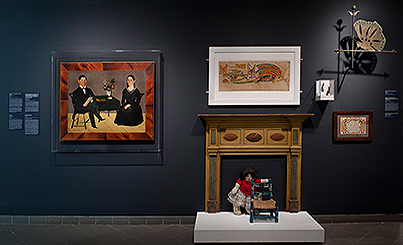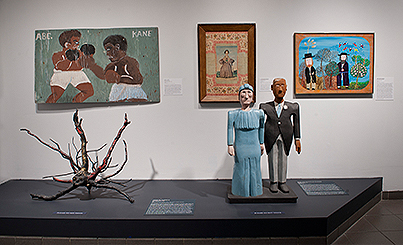AURORA
Artist unidentified
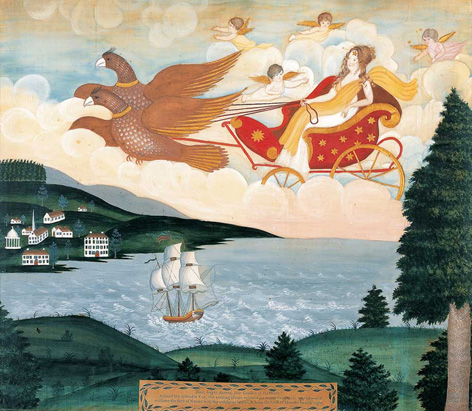
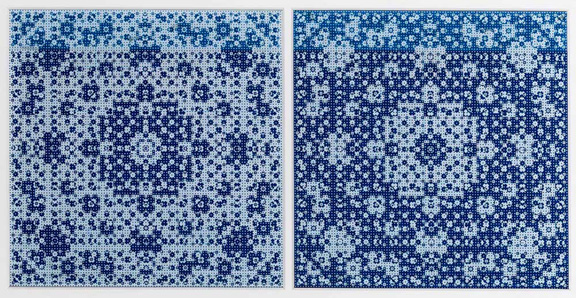
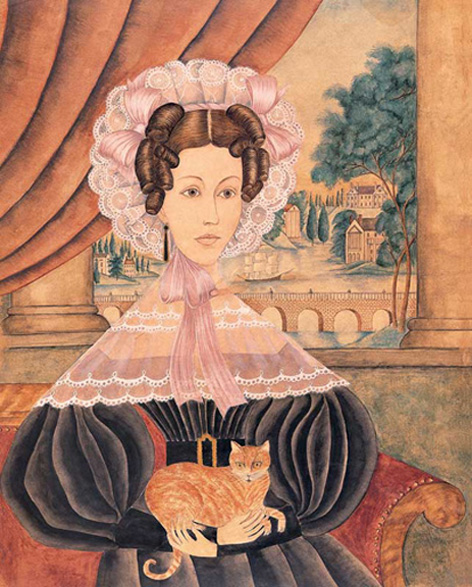
Life is not lived in black and white: reality may have the tinge of dreams and dreams an air of reality. This provocative tension exists between the experiential nature of early American folk art and the fantastical imagery it often displays—between what is real and what is imagined. The same is true of the work of contemporary self-taught artists, which may introduce unique—and sometimes puzzling—expressions that illuminate the iconoclastic nature that is the flip side of the collective American psyche. The viewer is placed in the peculiar but exhilarating position of deciding for him- or herself whether the artwork expresses a disjuncture with reality or an uninhibited embracing of interior life. After all, what is more true, the picture that looks real or the picture that feels real; the observer or the observed? These perceptions shift as new scholarship emerges. Often, real-life roots are discovered for even arcane and esoteric imagery that has already influenced our response to an artist and his work: does this disappoint or satisfy the viewer? Diminish or enhance the creativity of the artist? One need only contemplate the culture- and memory-driven gestures of Martín Ramírez, the impressionistic nineteenth-century portraits by Dr. and Mrs. Shute, and minimalist mid-twentieth-century soot drawings by James Castle to render these distinctions immaterial. Instead the viewer is urged to enjoy the permeable fluidity between art and imagination, dream and belief.
The exhibition is sponsored, in part, by Joyce Berger Cowin, by public funds from the New York City Department of Cultural Affairs in partnership with the City Council, by Bloomberg Philanthropies, by the Ford Foundation, and by the Magazine Antiques.
- Ken Johnson

Aurora
Artist unidentified
New England
c. 1818–1822
Watercolor on silk with applied gold foil and paper label, in original gilded wood frame
21 3/8 x 24 5/8 in.
American Folk Art Museum, gift of Ralph Esmerian, 2005.8.46
© 2000 John Bigelow Taylor, New York

Mrs. Keyser
Artist unidentified
Baltimore
c. 1834
Watercolor, gouache, ink, and pencil on paper, in original frame covered with embossed paper with traces of gilt
22 3/4 x 18 1/4 in. (sight)
American Folk Art Museum, gift of Ralph Esmerian, 2005.8.9
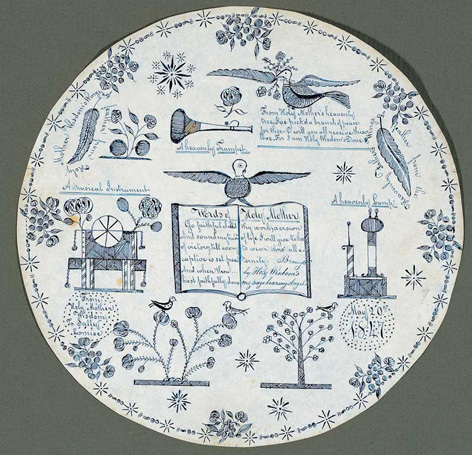
Gift Drawing from Holy Mother Wisdom to Sally Lomise
Attributed to Sarah Bates (1792–1881)
New Lebanon, New York
1847
Ink on cut paper
6 3/4 in. diameter
Private collection
Photo © 2000 John Bigelow Taylor, New York

Untitled #13 (Blue Quilt)
Martin Thompson (b. 1956)
Wellington, New Zealand
2002–2005
Ink on graph paper
12 3/4 x 25 in.
American Folk Art Museum, gift of the artist and Stuart Shepherd, 2005.22.2
Photo by Gavin Ashworth, New York
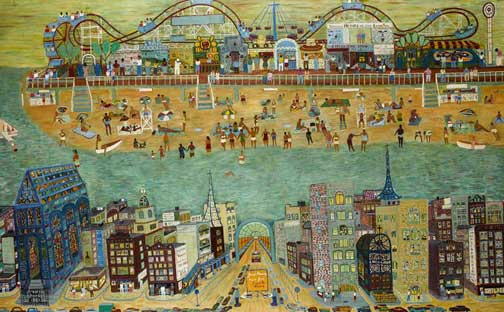
Coney Island
Ralph Fasanella (1914–1997)
New York City
1950–1970
Oil on canvas
59 x 96 x 1 1/2 in.
American Folk Art Museum, gift of Maurice and Margo Cohen, 2002.1.1
Photo by Gavin Ashworth, New York
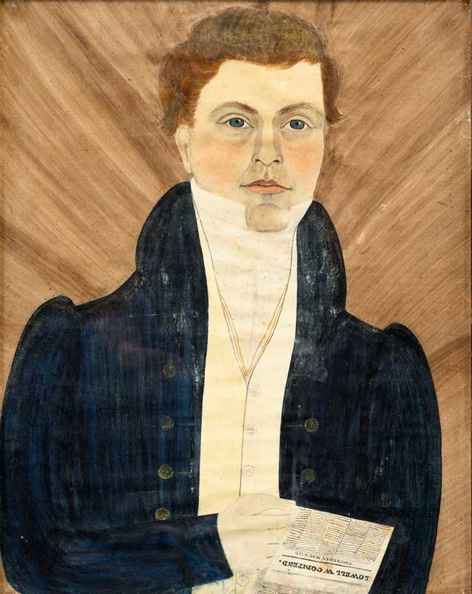
Joseph Gilman Parker
S.A. Shute (1803–1836) and R.W. Shute (1803–1882)
Lowell, Massachusetts
1832
Watercolor, metallic paint, pencil, and ink on paper
American Folk Art Museum, gift of Steven and Helen Kellogg, 2001.17.1
Photo by Gavin Ashworth, New York
The exhibition is sponsored, in part, by Joyce Berger Cowin, by public funds from the New York City Department of Cultural Affairs in partnership with the City Council, by Bloomberg Philanthropies, by the Ford Foundation, and by the Magazine Antiques.
